Description
Amla Fruit (Gooseberry) Benefits

If you live in America, there’s a good chance you’ve never even heard of this fruit.
If you live in India, then you definitely know what the benefits of amla juice and powder are. It’s one of the most important ingredients in Ayurveda, the 3,000 year-old traditional medicine system which originated in India. Pakistan
Amla powder
There are dozens of different plants called “gooseberry” throughout the world, but this one is botanically different than all the others.
Its common name, amla berrry, comes from the Sanskrit word amalika. It’s in reference to the Indian gooseberry (Phyllanthus emblica). This bitter tasting fruit can be found growing on a hardy tree which reaches heights up to 60 feet. Its lime green berries, which are about the size of a ping-pong ball, are the 2nd most best fruit source of vitamin C in the world. While they can be eaten fresh, the most common way to consume them is in the form of a ground powder.
The bad news, first
How many amla to eat in a day? Not many. With the raw fruit, it would be just a handful at most. If you want to buy fresh amla in the United States, that’s practically impossible. Though you can buy the freeze-dried powder, which is even better than the traditional (non freeze-dried) powder that has been used for thousands of years. Freeze drying the raw powder does an excellent job at preserving the vitamin C and antioxidant content.
How much per day of the powder to use is only 1 teaspoon. Perhaps more if you’re accustomed to taking it regularly, but using higher amounts might lead to an unintended consequence… it can act as a diuretic. That is by far the most common adverse reaction and why traditionally, the amount to take daily as a supplement is small. A tablespoon or less per day.
Based on human studies and clinical research, known and potential side effects for amla include the following:
- Diarrhea or loose stools
- Increased risk of bleeding
- Unwanted weight loss
- Lowering of blood sugar
- Lowering of blood pressure
- Pregnancy safety has not been studied
A couple of those would be considered health benefits for most people, but for diabetics on blood sugar medication, the glycemic impact might result in too low of blood sugar. Likewise for those on blood pressure medicine. The diuretic effect may cause unintended weight loss and that would not be a healthy way to lose weight.
What follows is a list of 30 different benefits for which the fruit is being studied:
- Numbers 1 through 21 are animal and lab studies.
- Numbers 22 through 30 are human studies (in vivo).
To be clear, just because something is being researched, that does NOT mean it’s a proven benefit. What follows is only preliminary research. The potential health advantages remains theoretical and you should assume all of the following benefits are currently unproven. Before embarking on any new dietary changes, consult your doctor. These statements have not been evaluated by the Food and Drug Administration. This product is not intended to diagnose, treat, cure, or prevent any disease.
With that said, let’s go through what scientists are finding out about this fascinating fruit.
1. Highest antioxidant fruit
The best way to measure antioxidant activity is using the ORAC test. Here’s how 100 grams tests out compared to other superfoods:
- fresh blueberries = 4,669
- spirulina powder = 5,970
- maca powder = 6,100
- fresh wild blueberries = 9,621
- fresh black raspberries = 19,220
- acai powder = 102,700
- amla powder = 261,500
It tests out at being 55x higher than blueberries and 1.5x higher than acai! The only fruit that ranks higher is the coffee cherry, but that’s assuming you don’t count the inner bean (seed) in the measurement.
Given its potency, maybe eating just a little bit of amla per day isn’t so bad after all!
2. Vitamin C that blows away oranges
If you think orange juice is high in vitamin C, think again.
For starters, all of the OJ for sale in the U.S. is pasteurized. That destroys the vitamin C content. Unless you are buying the expensive cold-pressed version, brands like Tropicana, Minute Maid, and Florida’s Natural all use synthetic ascorbic acid which is added in after pasteurization. Over 80% of ascorbic
acid is made in China.
Compared to fresh oranges, Indian gooseberries have 20-30x the concentration of vitamin C. The raw powder is a rich source, too.
3. High fiber content
A 100 gram serving of the fresh provides 4.3 grams of fiber, which is nearly 20% of your daily value.
Compare that to blueberries and apples, which are both around 15% lower.
4. Non-alcoholic fatty liver disease (NAFLD)
At a university in Taiwan, they tested rats on a high fat diet meant to mimic NAFLD. When the rats were given the fruit, it appeared to have a protective effect on their livers.
5. Liver damage from alcohol
In another study with rats, this one out of India, they wanted to see if the amla flavonoids, tannins, and phenolic content would help rats who were given alcohol (in the form of ethanol). After the one month experiment, the liver tissue was much healthier in the rats who also were supplemented with high dosages of this berry.

On the left is a liver with alcohol only. On the right is one that was also treated with the Indian gooseberries at a dose of 1,000 mg per kg of body weight.
The results showed that WEPE (water-based extract of the fruit) could significantly decrease body weight, peritoneal fat and epididymal fat, enhance the antioxidant enzyme activities, and improve steatosis through elevating adiponectin in adipocytes and PPAR-a in the liver as well as lowering SREBP-1c in the liver of rats fed with a high fat diet.
6. Liver poisoning from iron overdose
Since iron is stored in the liver, having too much can cause significant oxidative damage in that organ. Swiss albino mice who were intentionally overdosed on iron. When the fruit extract was given it “showed significant decrease in liver iron, serum ferritin, and serum enzyme levels” and lower levels of oxidative damage. (5)
7. Liver damage from sugar
Diabetes aren’t the only problem to worry about. Too much fructose is linked to fatty liver and cardiovascular disease, especially in older women. A rat model – which was intended to replicate the age of post menopause – involved 18 weeks of treatment. Some were given regular food while others were on a high fructose diet. For the latter, when they were given amla supplements daily, beneficial changes in the protein expressions of their livers were observed. (6)
8. Arsenic poisoning
The heavy metal arsenic will accumulate in your vital organs like the spleen, liver, and kidneys. In a study involving male mice, some were given arsenic contaminated water to drink daily, while others received the same but with amla leaf extract too.
There wasn’t a difference in the amount of arsenic that accumulated in their bodies, but those who also received the extract had organ sizes that were more comparable to the control group. For those who didn’t get the plant, they showed the typical pattern of having enlarged kidneys, spleens, and livers. (7)
9. Cadmium poisoning
In a similar study where rats were given a single toxic dose of cadmium, some got a supplement with amla juice while others did not. After 8 days, there was “considerably reduced” mortality in the rats who got the juice, as well as better histological profiles for testicular, liver, and kidney damage. (8)
10. Kidney injury from contrast
In a rat study involving contrast-induced acute kidney injury, they found that with a daily dosage of amla berry extract equivalent to 250 or 500 mg per kg of body weight, it appeared to offer a protective benefit for their kidneys. (9)
significantly preserved renal function and attenuated the severity of pathological damage
11. Age-related renal dysfunction
As part of the aging process, kidney disease is common. The organs’ ability to filter blood and toxins often decreases with age. Scientists in Japan wanted to see if the extract of this fruit might help with the oxidative stress involved from that. Using young and old rats who were given daily dosages of 10 or 40 mg/kg of body weight, they observed the following positive effects in the older rats (10):
- Lower creatinine levels
- Lower urea nitrogen
- Lower systolic blood pressure
Other factors such as COX-2 and nitric oxide synthase improved, too. That’s why they theorized:
These results indicate that amla would be a very useful antioxidant for the prevention of age-related renal disease.
12. Nootropic
Using extract from both ripe and unripe amla, mice were treated for 12 days and then tested for cognitive function, antioxidant enzymes in the brain like superoxide dismutase (SOD), and other factors. Those receiving the fruit had better memory retention, especially at the highest daily dose of 200 mg/kg of body weight. (11)
fruit possesses an excellent source for natural cognitive enhancer which could be developed in the treatment of AD [Alzheimer’s disease] and other neurodegenerative diseases.
13. Alzheimer’s disease markers
No one knows the cause of Alzheimer’s, but one thing that correlates with it is an increase in amyloid plaques of the brain. Whether that is a cause of the disease or a side effect is unknown.

In a rat study, injections of aluminum chloride (AlCl3) were used to cause memory loss and increase amyloid expression. This was said to cause brain abnormalities similar to that of Alzheimer’s disease. For the mice given the fruit, they said it “nullified the cognitive deficits, biochemical abnormalities and apoptosis induced by AlCl3 treatment.” (12)
14. Hair loss
The 5-Reductase enzyme converts testosterone to dihydrotestosterone (DHT). This is believed to be a contributor to male pattern baldness. Higher levels of DHT are often present in the skin of men who have hair loss.

Suppressing the 5-Reductase enzyme is how Propecia works. That mechanism is why it’s one of the bestselling drugs of all time.
In a study out of Thailand, scientists tested a number of herbs, fruits, and vegetables which have played a part in the region’s traditional medicine practices. Indian gooseberry was found to be one of the best 5a-reductase inhibitors in test mice. Only safflower (Carthamus tinctorius) was found to be more beneficial for their hair growth inhibited by DHT. (13)
15. Precancerous lung lesions
An experiment using a known cancer causing agent, benzo(a)pyrene, was given to mice to inflict the growth of nodes in their lungs. For those supplementing with amla berry, the number of these nodes was “significantly decreased” and several anti-inflammatory markers also benefited. (14)
16. Ovarian cancer cell proliferation
At the OB/GYN department of the University of Missouri Kansas City, mice were studied with xenograft ovarian tumors. Those are are human cancer cells which are able to grow in genetically altered mice (so their body doesn’t reject them). The amla extract appeared to have an antiproliferative effect on the tumor growth. Another good sign was the increased expression of angiogenic genes. (15)
17. Liver cancer cells
Using a line of cultured human liver cancer (BEL-7404 cells), researchers in China wanted to see if the gallic acid extracted from amla leaf could affect their growth. It was found that in a dose dependent manner, increasing amounts of apoptosis occurred in these cells. Apoptosis is the natural death of the cancerous cells, which would obviously be good for you if the same thing happens in humans. (16)
18. Breast cancer cells
Using the MDA-MB-231 cell line, it was observed that relatively low concentrations of the fruit extract (25 and 50 microg/mL) decreased the invasiveness of these breast cancer cells in a lab experiment (invasion assay). (17)
19. Colon cells
The same preceding study also tested a human colorectal cancer line (SW620). At a dosage of 50-100 microg/mL it “significantly inhibited cell growth.”
20. Genetic mutations
Rather than test colon cancer, this recent study used normal human colon epithelial cells. They wanted to see if the fruit might help with genetic damage, such as chromosome misalignment. When compared with the control (untreated) cells, those treated with a solution containing the fruit were said to have “decreased frequencies of all mitotic aberration biomarkers” and other signs of DNA damage.

PE = P. emblica (the fruit). As you see, higher dosages of it demonstrated decreasing genomic instability (MN, NPB, and NB). (18)
21. Antiviral activity
In lab experiments, extracts of the fruit have demonstrated antiviral activity against hepatitis B, influenza A strains, herpes simplex, and other viruses. These effects have not been tested in animals or humans. Scientists believe the compounds responsible for the apparent antiviral activity are its pentagalloylglucose and norbisabolane sesquiterpenoid glycosides. (19) (20) (21) (22)
22. Vitiligo
At the University of Florence in Italy, the dermatology department evaluated 130 people who had vitiligo:
- 65 people were given a once daily oral capsule of amla (100 mg), vitamin E (10 mg), and carotenoids (4.7 mg).
- 65 people got a placebo version.
- Each group took these for 6 months.
Those using the amla supplement with other antioxidants experienced skin benefits. A “significantly higher” number of them experienced areas of repigmentation and fewer signs of inflammation versus the untreated group. They speculated that existing vitiligo treatments might work better if these antioxidants were added to the regimen. (23)
23. Head lice
Thai children with head lice took part in a study. Some received the standard of care (carbaryl shampoo) while others were given herb-containing shampoos. The amla shampoo was found to actually be more effective for killing the head lice, with a kill rate of 94.67-97.68% after the first treatment. Since no side effects were observed, they proposed amla is a safe potential alternative that deserves more research. (24)
24. Anti-aging of DNA
 Amalaki rasayana is a traditional ayurvedic medicine in the form of amla jam. There have already been a handful of animal studies suggesting that it might help reduce DNA damage that occurs during the aging process.
Amalaki rasayana is a traditional ayurvedic medicine in the form of amla jam. There have already been a handful of animal studies suggesting that it might help reduce DNA damage that occurs during the aging process.
Recently the first human study was published where healthy volunteers were given either rasayana or a placebo for 45 days. Their DNA was analyzed before and after. There was no beneficial change in DNA repair activity, but this was the conclusion (25):
Intake of Amalaki rasayana by aged individuals showed stable maintenance of DNA strand break repair without toxic effects.
25. Periodontal disease of the teeth
A randomized and placebo controlled clinical trial used an oral gel whose active ingredient was 10% amla. Both groups also received scaling and root planing. After 3 months of treatment, the benefits of Indian gooseberries seemed impressive. Compared to the placebo gel, the gooseberry version correlated with better probing pocket depth (PPD), greater clinical attachment level (CAL), and a better modified sulcus bleeding index (mSBI). (26)
26. Cardiovascular disease risk factors
Conducted at Ohio State University, a total of 15 overweight/class-1 obese adults participated. They were 36 years old on average. Each person used a 500 mg dosage of amla powder capsules twice daily for 12 weeks. Since it was a small trial there was no placebo group. Compared to their baseline, the following were observed after the 12 weeks of treatment (27):
- Lower LDL cholesterol that was a “significant decrease.”
- Circulatory high-sensitivity C reactive protein (hs-CRP) levels were “significantly decreased.”
- ADP- and collagen-induced platelet aggregation was “significantly downregulated.”

27. Blood sugar
This study involved both healthy and diabetic humans. Each participant was given a dosage of 1, 2, or 3 grams of amla fruit powder per day. After 21 days, there was a significant decease in fasting blood glucose and 2-hours after eating. Those receiving the highest dosages (2 and 3 grams) also had lower total cholesterol, LDL cholesterol, and triglycerides. Both those with and without diabetes experienced this. (28)
28. Type 2 diabetes and platelet function
Due to increased oxidative stress, diabetics often have impaired blood clotting due to abnormal platelets. In this small crossover study, 10 people with diabetes were tested with the following:
- 500 mg amla extract twice daily
- 75 mg clopidogrel (Plavix) once daily
- 75 mg aspirin once daily
- Combinations of more than one
These were tested both as a single dose and after a washout period, as an on-going treatment for 10 days. (29)
P. emblica extract demonstrated significant antiplatelet activity with both single and multiple dose administration.
29. Urine in blood
Called uremia, patients with this disease were given an amla supplement to use for 4 months. It did not improve their kidney or liver function, but their data suggests it decreased oxidative stress by increasing plasma antioxidant levels. (30)
30. Antibacterial benefits
 This double blind and randomized trial involved 57 adults who used a triphala mouthwash. As mentioned, that Ayurvedic recipe is not pure amla, but it does represent a major portion at 33% by weight.
This double blind and randomized trial involved 57 adults who used a triphala mouthwash. As mentioned, that Ayurvedic recipe is not pure amla, but it does represent a major portion at 33% by weight.
Some received a mouthwash with a 6% strength of triphala, others were given chlorhexidine (a prescription mouthwash) and one group used neither. Both of mouthwashes performed comparably:
- After 15 days, triphala and chlorhexidine mouthwashes had a 83% and 80% reduction in mutans streptococci bacteria, respectively.
- After 45 days, the benefit was a 67% and 65% decrease.
- The non-mouthwash group experienced a 3% increase at 15 days and a 7% increase at 45 days.
The triphala was reported to have a similar antibacterial activity as this leading prescription, though without the side effects. A similar study involving school children also saw comparable improvement in plaque and gingivitis when those same two mouthwashes were matched against one another. (31) (32)
Verdict?
Remember, this is a list of Indian gooseberry and amla powder benefits being studied. They are not proven in humans. Still, there’s a lot of data out there to suggest they might be good for you in multiple ways, though a lot more research will be needed to find out.
What is certain is that the high vitamin C in amla is healthy for you. Just that perk alone makes it a smart investment for your body. Here’s how to take it:
- Try these USDA organic caplets which are filled with the fruit and stem powder.
- Buy a bag of organic raw powder and use a teaspoon daily. Mix with food or add to water for a juice-like drink.
These statements have not been evaluated by the Food and Drug Administration. This product is not intended to diagnose, treat, cure, or prevent any disease.
Nutrition Facts of Amla:
Major Nutrients
| Major Nutrient | Value per 100 g | % of RDA |
| Total Calories | 48 | 2.4% |
| Total Fat | 0.5 g | 0.5% |
| Protein | 1 g | – |
| Total Carbohydrate | 10 g | 3% |
| Water | 86 g | – |
| Phenolic Compounds Gallic Acid | 3012.5 mg | NA |
Carbohydrates
| Carbohydrates | Value per 100 g | % of RDA |
| Total Carbohydrates | 10 g | 3% |
| Dietary Fiber | 5 g | 18% |
| Sugar | – | – |
| Starch | – | – |
Fat, Lipids & Fatty Acids
| Lipids | Value per 100 g | % of RDA |
| Total Fat | 0.5 g | 1% |
| Saturated fat | Nil | – |
| Monounsaturated fat | 0.1 g | – |
| Polyunsaturated fat | 0.3 g | – |
| Cholesterol | Nil | – |
| Trans fat | Nil | – |
| Omega-3 fatty acids | 48 mg | – |
| Omega-6 fatty acids | 276 mg | – |
Vitamins
| Vitamins | Value per 100 g | % of RDA |
| Vitamin A, IU | 290 IU | 6% |
| Vitamin C | 478 mg ? | 800% ? |
| Vitamin D | – | – |
| Vitamin E (alpha-tocopherol) | 2450 mg* ? | 1225%* ? |
| Vitamin K | – | – |
| Thiamin | – | 3% |
| Riboflavin | – | 2% |
| Niacin | 0.3 mg | 1% |
| Vitamin B6 | 0.1 mg | 4% |
| Folate | 6 mcg | 1% |
| Vitamin B12 | – | – |
| Pantothenic Acid | 0.3 mg | 3% |
| Choline | – | – |
| Betaine | – | – |
Minerals
| Minerals | Value per 100 g | % of RDA |
| Calcium, Ca | 25 mg | 2% |
| Iron, Fe | 0.9 mg | 6% |
| Magnesium, Mg | 10 mg | 2% |
| Phosphorus, P | 27 mg | 3% |
| Potassium, K | 198 mg | 6% |
| Sodium, Na | 1 mg | 0% |
| Zinc, Zn | 0.12 mg | 1% |
| Copper, Cu | 0.1 mg | 4% |
| Manganese | 0.1 mg | 7% |
| Selenium | 0.6 mcg | 1% |
| Fluoride | – | – |
Amla, Gooseberry , آملہ ، آنولہ
ماہیت ۔ یہ پاکستا ن اور ہندوستان کا بہت زمانہ سے جا نا پہچانا درخت ہے۔اسکا بہت بلند مقام ہے ۔
اس کا درخت مختلف جگہو ں میں چھو ٹا بڑا ہو تا ہے۔ یعنی جنگلی کا در خت بڑا لیکن قلمی جس کو بنارسی کیا جاتاہے وہ درخت چھو ٹا ہو تا ہے ۔
تناْ۔ٹیڑھا سخت لکڑی کا اور اس کے اوپر کا چھلکا لگ بھگ چو تھا ئی انچ مو ٹا اور راکھ کی طر ح سفیدی مائل ہو تا ہے ۔ اور ہر سا ل اتر تا رہتا ہے ۔ پھل کا غذی کی طر ح چھوٹے بڑے لیکن گول جو قدرتی طور پر چھ پھانکو ں میں تقسیم ہو تے ہیں ۔ پھل کا چھلکا بہت پتلا ہو تا ہے جن کے اندرایک دو جنوری تک زردیاسرخی مائل زرد ہو جا تا ہے ۔ آملہ کا پھل اگست اور ستمبر میں سبز اور پھر نومبر سے جنو ری تک زرد یا سر خی مائل زرد ہو جاتاہے ۔ اس کا وزن عموماً پچیس گرام لیکن قلمی آملہ کا وزن پچا س گرام ہو تا ہے ۔ بڑا آملہ عمو ماً مربہ کے لئے جب کہ چھو ٹا آملہ ادویا ت کیلئے خشک کیے جا تے ہیں ۔ مو سم خزاں کے بعد ما رچ اپریل میں شاخوں پر سبزی مائل زرد بہت چھو ٹے چھو ٹے گچھو ں میں اوران سے خو شبو لیمو ں کے پھلوں کے طرح آتی ہے۔
مقام پیدائش ۔ عمو ماً کنکریلی اور پتھر ی زمین میں پیدا ہو تا ہے اور سمندری کنا روں کے نز دیک بھی پید ا ہو تا ہے ۔
رنگ ۔ تازہ بھورا سبزی مائل زردجبکہ خشک سیا ہی مائل نیلگوں اور اس پر جھر یا ں پڑی ہو تی ہیں ۔
ذائقہ ۔ پہلے کھٹا اور کیسلا لیکن بعد میں شیر یں میٹھا لگتا ہے ۔
مزاج ۔ سرد پہلے درجہ میں ، خشک دوسر ے درجے میں ۔
افعال و خواص ۔ مقوی اعضاء ریئسہ، مقوی معدہ ، مسکن حدت صفراء و خون ،مقوی چشم ، مقو ی و مسود شعر ، قابض خفیف ، مدر خفیف ۔
استعمال ۔ حا فظہ اور دما غ کو تیز کر تاہے ۔قوت بصر کو طاقت دینے کے علاوہ غفقان ، ضعف قلب اور ضعف معدہ کو دور کر نے کیلئے آملہ کا استعما ل باکثرت کیا جا تا ہے ۔ صفراء اور خون کے جو ش کو تسکین دینے کے علاوہ پیاس زائل کر نے اور دستو ں کو روکنے کیلئے مفید ہے ۔ آملہ کا پانی یا عصا رہ تیار کر کے تقویت چشم کے لئے آنکھو ں میں لگاتے ہیں ۔ آملہ کے خیساندہ یا جو شاندہ کے سا تھ بال دھونے سے بال صاف ہو جا تے ہیں ۔ وٹامن سی کی وجہ دل و دما غ اور پٹھو ں کو طا قت دیتا ہے ۔رحم اور آنکھو ں کیلئے مقوی ہے ۔اعضا ء کی زائد رطوبت کو خشک کرتا ہے اور ہائی بلڈ پر یشر کیلئے مفید ہے ۔ جب کہ بلڈ پر یشر زیا دہ ہا ئی نہ ہو ۔ اس میں ترش تیزاب ہو نے کی وجہ سے بھوک لگتی ہے ۔ لیکن آنتو ں پر اس کا خاص اثر نہیں ہو تا ہے ۔ دما غ کی طرف اجتما ع خون کو کم کر تا ہے ۔ اس لئے صداع ، تبخیر معدہ ،ما لیخولیا اورفالج میں مفید ہے ۔ رعا ف، خونی بواسیرکو ضما داًواکلاًمفید ہے ۔ وٹامن سی کی وجہ سے بہتے پھوڑے پھنیسو ں میں مفید ہے اگر برگ نیم کے ساتھ ملا کر کھایا جائے تو مصفیً خون ہے ۔ایک کلو تا زہ آملو ں میں چھ ہزار یو نٹ وٹامن سی اور پا نچ سوحرارے ہوتے ہیں ۔وٹامن سی کے علاوہ آملہ میں فولاد کی بھی کچھ مقدار پائی جا تی ہے نیز درج زیل اجزاء بھی پائے جاتے ہیں ۔ جن کا تناسب دس فیصدی ہے ۔
ٹے ٹین ، گیلک ایسڈ ، گلو کو ز، کیلسم اور ٹینک ایسڈاس تجزیہ سے معلوم ہو تا ہے کہ پاءئیو ریا کے علاوہ لیکو ریا اور مزکورہ امراض کی مفید ترین دواء ہے ۔
فوائد خاص ۔ مقوی اعضائے ریئسہ ،لشہ دامیہ ، حابس ، اسہال اور مقوی معدہ ۔
مضر۔ قبض گو قولنج پیدا کر تا ہے ۔
مصلح ۔ شہد ،روغن بادام ۔
بدل ۔ ہلیلہ کاہلی صرف تقویت معدہ میں ۔
مقدار خوراک ۔ تین سے پانچ ما شہ یعنی گرام ۔
تمام پھلوں سے زیادہ وٹامن آملہ میں
مثل مشہور ہے کہ آملے کا کھایا اور بزرگوں کا کہا بعد میں پتا چلتا ہے یعنی ان دونوں میں جو فوائد پوشیدہ ہیں وہ آگے چل کر سامنے آتے ہیں۔آملے میں قوت و توانائی کا خزانہ بند ہے۔ جو لوگ آملے کا خوردنی استعمال کریں وہ صحت کے ساتھ لمبی عمر پاتے ہیں۔ آملے کا پھل گول شکل کا ہوتا ہے گودا سخت اور موٹا ہوتا ہے۔ تحقیق کے مطابق اس میں موجود وٹامن سی کی مقدار دنیا کے سبھی پھلوں سے زیادہ ہے۔ یہ وٹامن بہت جلد انسانی بدن میں جذب ہوکر صحت اور قوت مدافعت بڑھانے اور درازی عمر میں معاون ثابت ہوتا ہے۔
غذائی صلاحیت: آملے کی زبردست قدروقیمت اس کے بڑے جزو‘ حیاتین ج کی وجہ سے ہے۔ مزید برآں اس میں کیلشیم‘ فاسفورس‘ فولاد اور وٹامن بھی ملتے ہیں ۔ آملہ استعمال کرنے کا سب سے بہتر طریقہ یہ ہے کہ اسے نمک کے ساتھ کچا کھایا جائے۔ یوں اس میں موجود حیاتین ج (سی) اور فولاد کم سے کم ضائع ہوتا ہے۔ آملے کے دانے بطور سبزی بھی استعمال ہوتے ہیں۔ یہ عموماً دوا کے کام زیادہ آتا ہے۔
طبی استعمال: پھیپھڑوں کے امراض آملے کے استعمال سے ٹھیک ہوجاتے ہیں۔ امراض قلب‘ زور زور سے دل دھڑکنے کی حالت اور کمزور دل حضرات کیلئے آملے کا مربہ مفید ہے۔ زیادہ پیاس لگنے یا قے آنے کی صورت میں آملہ چوستے رہیے۔ آملے کا سفوف منجن کے طور پر انگلی سے دانتوں پر ملیے‘ مسوڑھوں سے خون آنا بند‘ دانتوں کا میل صاف اور ہلتے اور دکھتے دانتوں کو آرام ملے گا۔ ٭ آملے کا باریک سفوف اگر چوٹ کے مقام پر چھڑک کر باندھ دیا جائے تو خون بہنا بند ہوجائے گا اور زخم بھی جلد ٹھیک ہوگا۔ تازہ آملے کا رس ایک چمچ اور ایک چمچ شہد ملا کر جو آمیزہ بنے وہ انتہائی عمدہ اور قیمتی دوا ہے۔ یہ متعدد بیماریوں کا شافی علاج ہونے کے ساتھ ساتھ صحت بخشتی ہے۔ ایک ہفتے تک روزانہ صبح سویرے اس آمیزے کا استعمال جسم کو قوت و توانائی سے بھردیتا ہے۔ شدید کمزوری کی صورت میں اسے دو ہفتے استعمال کیجئے۔ اگر تازہ پھل دستیاب نہ ہو تو خشک سفوف کو بھی شہد میں ملا کر معجون بنالیجئے۔
یہ آمیزہ سانس کی بیماریوں میں بہت مفید ہے۔ خاص طور پر پھیپھڑوں کی تپ دق‘ دمے اور کھانسی میں مؤثر ہے۔
آملہ، تخم جامن اور کریلوں کا ہم وزن سفوف ذیابیطس کی عمدہ دوا ہے۔ اس سفوف کی ایک چھوٹی چمچی دن میں ایک یا دو بار لینا مرض بڑھنے سے روکتا ہے۔ دس گرام آملہ پانی میں کوٹ کر چھان لیں۔ بعدازاں اس میں مصری یا شکر ملا کر پینے سے نکسیر کا خون بند ہوجاتا ہے۔ اسی طریقے سے بواسیر کے خون کا علاج بھی کیا جاسکتا ہے۔ جوڑوں کے درد اور سوزش میں بھی آملہ مفید ہے۔ خشک آملے کا سفوف ایک چمچ شکر دو چمچ ملا کرایک ماہ تک دن میں دو مرتبہ لینا اس مرض کا مؤثر علاج ہے۔
بڑھاپا:آملے میں نئی قوت اور توانائی مہیا کرنے کی تاثیر پائی جاتی ہے۔ اس میں ایک ایسا عنصر پایا جاتا ہے جو نہ صرف بڑھاپے کے آثار ختم کرتا ہے بلکہ طاقت بھی برقرار رکھتا ہے۔ یہ انسان کی جسمانی قوت مدافعت بڑھاتا اور اسے بیماریوں سے محفوظ رکھتا ہے۔ دل کو قوت دیتا‘ بالوں کو مضبوط بناتا اور جسم کے مختلف غدودوں کو فعال کرتا ہے۔ ایک سنیاسی کی مثال ہے کہ اس نے ستر برس کی عمر میں آملے کے استعمال سے خود کو پھر سے جوان بنالیا تھا۔
بال: گھنے بالوں اور آملے کا تو چولی دامن کا ساتھ ہے۔ بالوں کو چمکدار بنانے کیلئے دیسی نسخوں اور ٹوٹکوں میں آملے کو بنیادی اہمیت حاصل ہے۔ تازہ آملہ ٹکڑوں میں کاٹ کر سائے میں خشک کرلیں۔ پھر انہیں ناریل کے تیل میں اتنا پکائیے کہ تیل کی شکل جلے ہوئے برادے جیسی ہوجائے۔ یہ سیاہی مائل تیل بالوں کو سفید ہونے سے بچانے کیلئے عمدہ دوا ہے۔ تازہ یا خشک آملے کے ٹکڑے رات کو پانی میں بھگودیں۔ اگلے دن اس پانی سے سر کے بال دھوئیں ۔ یہ ان کی نشوونما کیلئے اچھی غذا ہے ۔ یاد رہے کہ صرف اسی پانی سے بال دھوئیے کسی قسم کا شیمپو استعمال نہ کریں۔
آملے کا سفوف پانی میں ملا کر گاڑھا سا لیپ بنالیجئے۔ پھر اسے بالوں کی جڑوں میں لگا کر کچھ دیر بعد سر دھو لیں۔ سفوف اور پانی کا مرکب اتنا گاڑھا ہونا چاہیے کہ تمام بالوں کی جڑوں میں لیپ ہوسکے




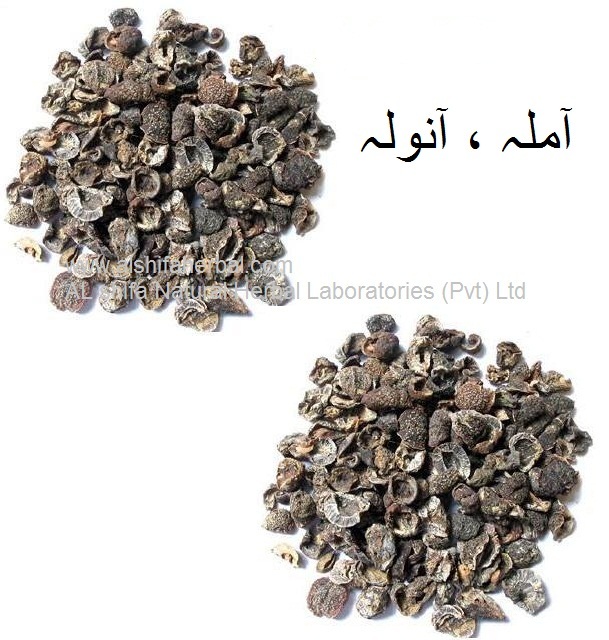
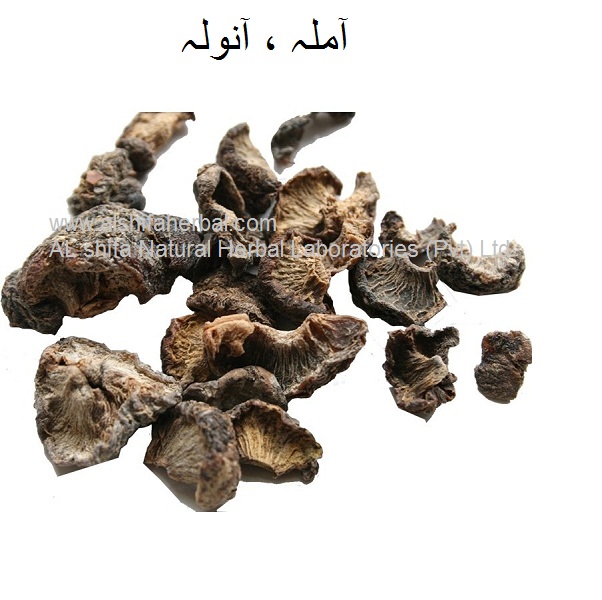






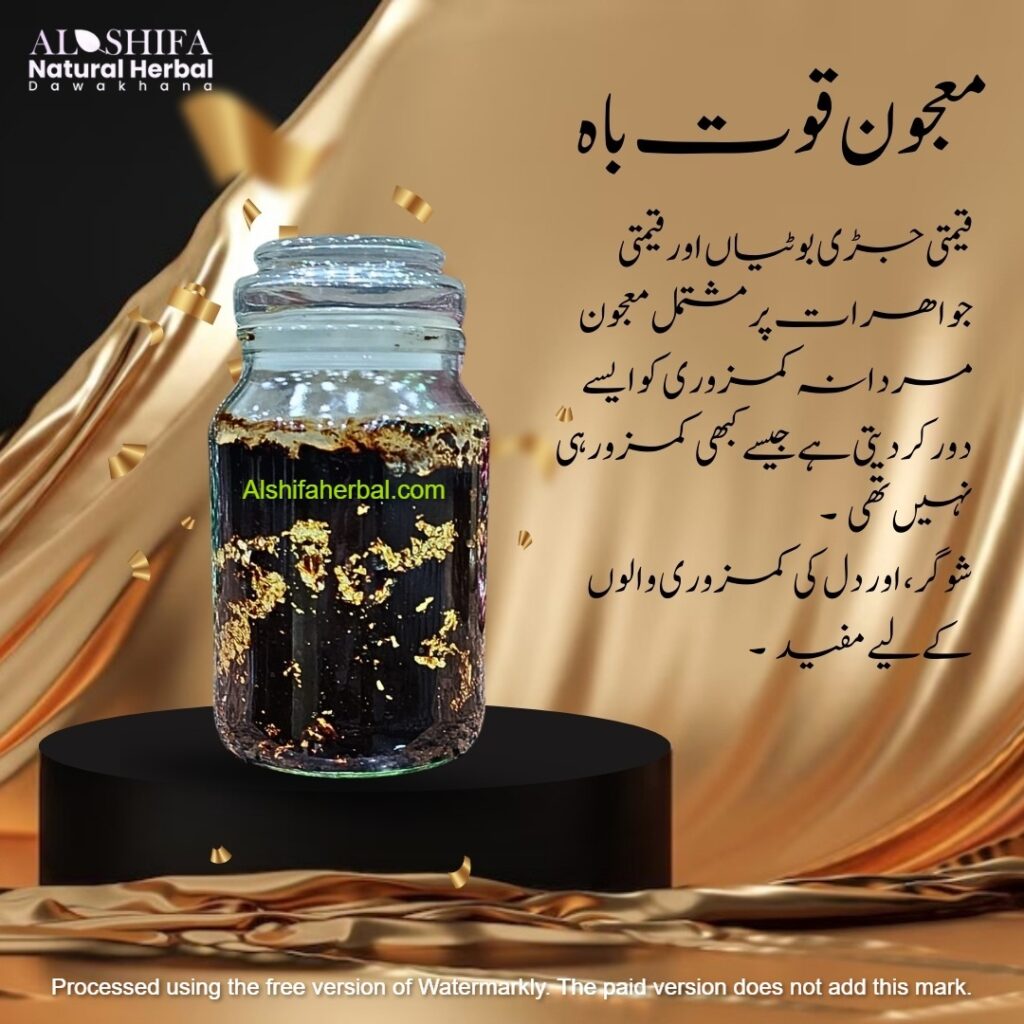
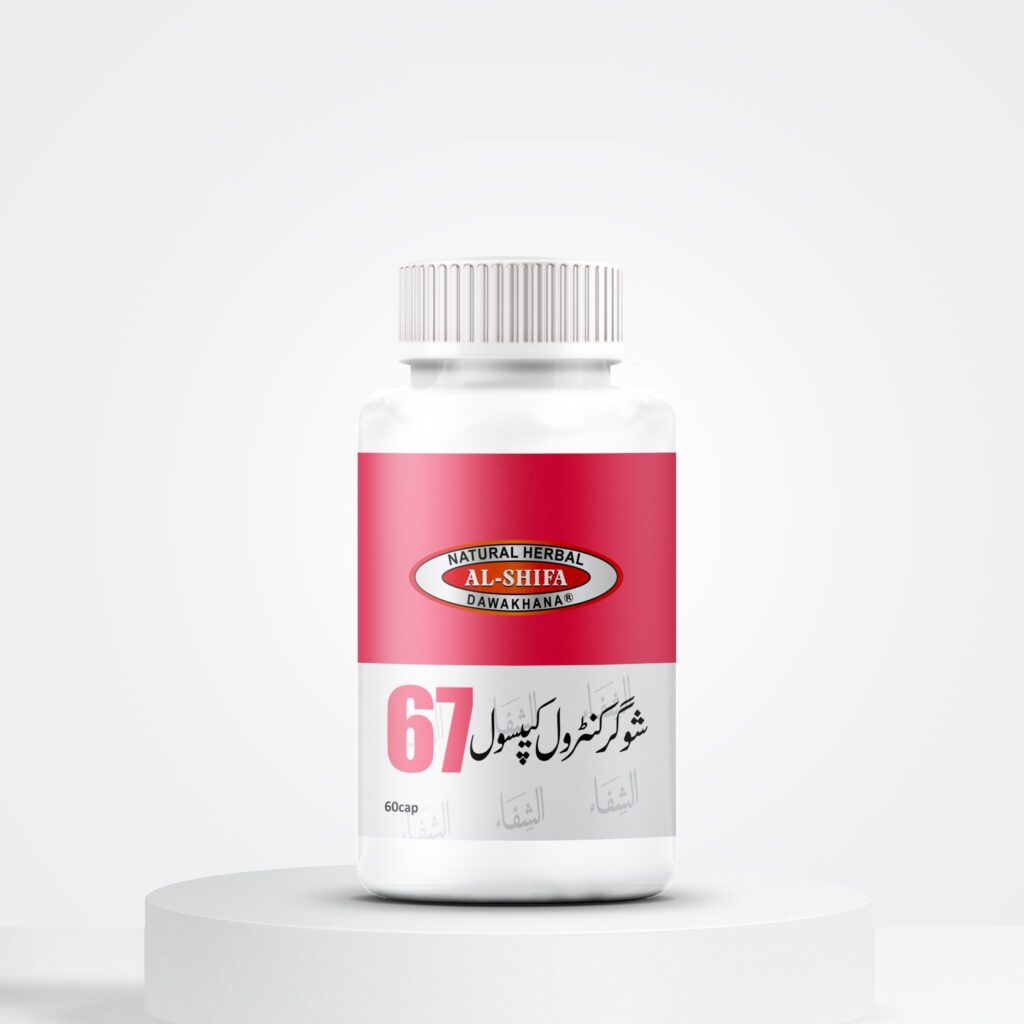
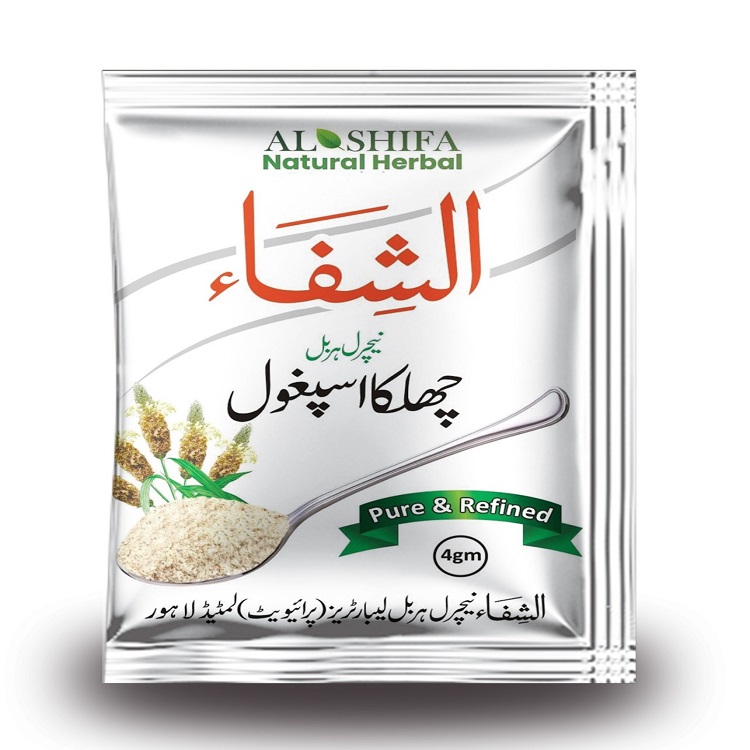



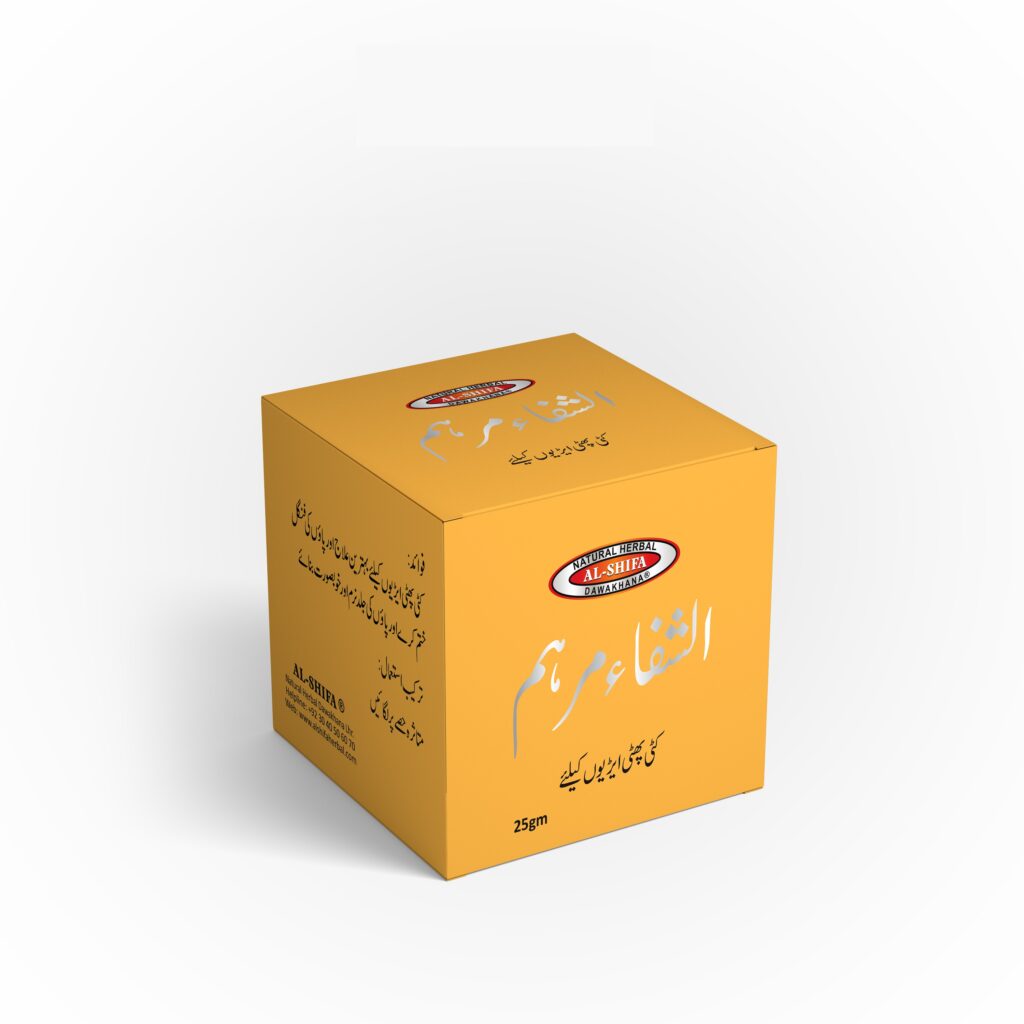



Reviews
There are no reviews yet.